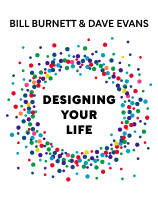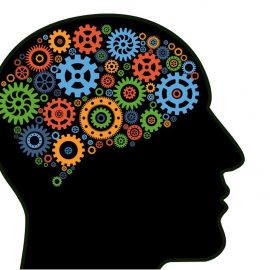

This article is an excerpt from the Shortform book guide to "Designing Your Life" by Bill Burnett and Dave Evans. Shortform has the world's best summaries and analyses of books you should be reading.
Like this article? Sign up for a free trial here .
Are you skilled at making life choices? What is the connection between choice and happiness?
Many people use a model for making life choices that virtually guarantees unhappiness. Alternatively, the life design model for choosing is designed to maximize joy. Rather than focusing on making good choices, try focusing on a good model for choosing.
Continue reading to learn the four steps of the life design model for making life choices.
Alternative Models for Making Life Choices
A step-by-step process for choosing happiness is an integral component of life design.
Defective belief: My happiness depends on making the right choice.
- Corrected belief: No “right choice” exists. There’s only good choosing.
Defective belief: Happiness means “having it all.”
- Corrected belief: Happiness comes from releasing whatever you don’t really need.
The underlying goal of life design is happiness. This is what gives meaning to all the attitudes, steps, and techniques that are part of life design. As a designer, you realize that being happy comes from choosing well among the options you generate through life design. Conversely, being unhappy comes from choosing poorly. Both ways of making life choices depend on a person’s mental model.
A Model for Choosing Unhappiness
Many people use a model for making life choices that virtually guarantees unhappiness. Or rather, they don’t use much of a model at all. Instead, they make life choices based on an unconscious conglomeration of thoughts, emotions, values, and motivations. By failing to take control of their choosing and make it coherent, they cut themselves off from critical insights (see below) and increase the likelihood that after they finally make a choice, they’ll agonize and be unhappy.
The tendency to agonize over choices we’ve made is apparently built into human psychology. Psychological experiments have found a tendency to agonize over not having made “the best choice” in situations where people had multiple options and/or felt there were options they couldn’t see. So when you choose among alternatives for the very direction of your life, if you don’t do something to manage this tendency, you risk consigning yourself to endless rounds of stress and regret. That’s why you need to make conscious use of a good model to make life choices.
A Model for Choosing Happiness
The life design model for making life choices is designed to maximize happiness.
First, collect and create options.
Second, focus and narrow your list. Too many options create decision paralysis, such as when you have thousands of streaming movies available but can’t settle on any of them. You don’t need more information; you need less. So look at your list of life design options and identify the top ones. As a strategy for doing this, group your list into themed categories, each one ordered by rank according to your interest. Then cross off lesser options.
Third, use careful discernment to choose. By “discernment” we mean relying on more than one way of knowing. In addition to the cognitive knowing that most of us usually rely on, there are affective forms of knowing (emotions, spirituality, intuition) as well as kinesthetic or bodily knowing. To make life choices that are wise, use these forms in tandem with cognitive knowing.
After you’ve generated and then narrowed your options, pay attention to your intuitions, emotions, and body, and “listen” to what they “tell you.” For example, Burnett and Evans (the authors of Designing Your Life) know a therapist who can tell whenever she’s approaching a significant issue with a client because her knee starts to hurt. She’s learned to listen to her body’s signals to help guide her therapeutic decisions.
You have to train yourself to hear these other forms of knowing. Traditional ways of doing this include practices such as journaling, yoga, tai chi, prayer, and meditation. Another practice, specific to life design choices, is to pick one of your top three life design alternatives and spend two or three days imaginatively living inside it as a kind of alternate reality. In your mind, all through the day, think and feel as if you had adopted that choice. Pay attention to your emotional, spiritual, intuitive, and physical feelings for signals about the rightness or wrongness of this alternative. Then do the same with the other two options.
If you’re not already practicing one or more disciplines like these, start now so that you can begin developing your discernment skills and have them ready when you need them.
Fourth, choose and let go. This is the capstone of the life design model for making life choices. When you intelligently generate options, narrow your list, and use discernment, you’re in the mental and emotional position to choose boldly and let go of any temptation to agonize or rehash. You’ve done your best to explore options and test them out. You’ve considered their coherence with your life and work philosophies. You’ve prototyped. You’ve made a careful selection among your options using a holistic process based on cognitive plus other ways of knowing. Now you can freely let go of any lingering doubts and just concentrate on living well with the choices you’ve made.

———End of Preview———
Like what you just read? Read the rest of the world's best book summary and analysis of Bill Burnett and Dave Evans's "Designing Your Life" at Shortform .
Here's what you'll find in our full Designing Your Life summary :
- Why finding your "true passion" in life is a myth
- The five mental attitudes in design thinking
- How to design a meaningful life in which you can truly thrive






